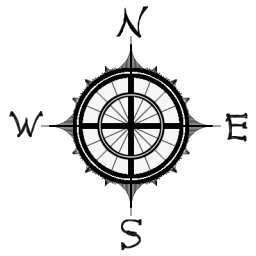
Accuweather meteorologist Joe Bastardi is reminding us that it's time to start thinking about Hurricane Season 2007. Mr. Bastardi warns that the U.S. Gulf Coast is at a much higher risk of destructive tropical weather this year. Last year, Bastardi was correct in forecasting minimal hurricane activity for the Gulf Coast area.
As for the Northeast, Bastardi says that last year the area was able to dodge the bullet but it may not be so lucky this year. His forecast for last year called for the likelihood of seeing more hurricane activity along the East Coast than along the Gulf Coast. Most of 2006's storms did track farther east than those in 2005.
Even in years of minimal hurricane activity, devastating hurricanes and tropical storms can still wreak havoc for the U.S. as attested to by the destruction caused by Hurricane Andrew. According to Bastardi, last year was just a breather but the overall pattern shows no signs of reversing.
Although conventional meteorologists issue long-range hurricane outlooks, they are unable to pinpoint the time and place of hurricanes or other specific weather patterns if the forecast period is beyond a three or four day time period. Long-range weather forecasts based on planetary positions, however, afford the forecaster indications that enable him or her to make more specific forecasts months or years in advance. The following links are some examples of such forecasts made for Hurricane Season 2006.
The hurricane season runs from June through November. Below are a few dates in June when severe weather patterns are likely to develop. Because the planetary alignments upon which the following forecasts are based usually coincide with high wind and/or tropical moisture, the weather patterns indicated carry the potential for being tropical systems, however, non-tropical systems can also produce high wind and involve tropical mositure.
Over the next weeks, The Weather Alternative will post more long-range forecasts of potential hurricane hot spots.
June 5-8, 2007:
The opposition between the Sun and Jupiter will trigger the lunar eclipse of March 3, 2007, affecting the coastal areas of North and South Carolina between 77 and 79 West Longitude and 33 North Latitude. Its influence extends northward through New Jersey. The warm influence, characteristic of Sun-Jupiter alignments, and high velocity winds, indicated by aspects between Jupiter and Uranus (also present at this time), carry the potential for severe weather over this area, which may be tropical in nature.
June 15-17, 2007:
Seventy-seven West Longitude, running through Cuba, the Bahamas, and North Carolina is the focal point for increased wind velocities as Mercury makes its retrograde station. The Moon also adds to the mix by being at its closest approach to Earth and at maximum north declination as it conjoins Mercury. If not an actual tropical system, a cold front dropping through the Northeast pushes southward toward the Carolinas triggering windy conditions.
June 24-July 3, 2007:
This is an important time due to the opposition between Saturn and Neptune, which correlates with excessive humidity, prolonged heavy rains, and flood threats. (See specifics below)
June 24-27, 2007:
The central to eastern Gulf Coast is in jeapordy now as tropical moisture is shunted northward over the region pushing into the Mississippi Valley and Deep South.
Other areas worth watching for severe weather are western Canada around 117 West/51 North, and Ireland.
June 27-29, 2007:
The eastern Gulf and Gulf Coast are still under the gun as the Sun conjoins Mercury. These two coincide with increased wind velocity and, in season, hurricane formation. The central panhandle of Florida and northward through Atlanta are places in the line of fire now.
June 30-July 3, 2007:
Venus now triggers the Saturn-Neptune opposition drawing moisutre up over South Carolina and the Southeast.
Expect an influx of mositure from the south over the Baja California into the Desert Southwest.
When thou passeth through the waters, I will be with thee; and through the rivers, they shall not overflow thee: when thou walkest through the fire, thou shalt not be burned; neither shall the flame kindle upon thee ( Isa.43:2 ).





